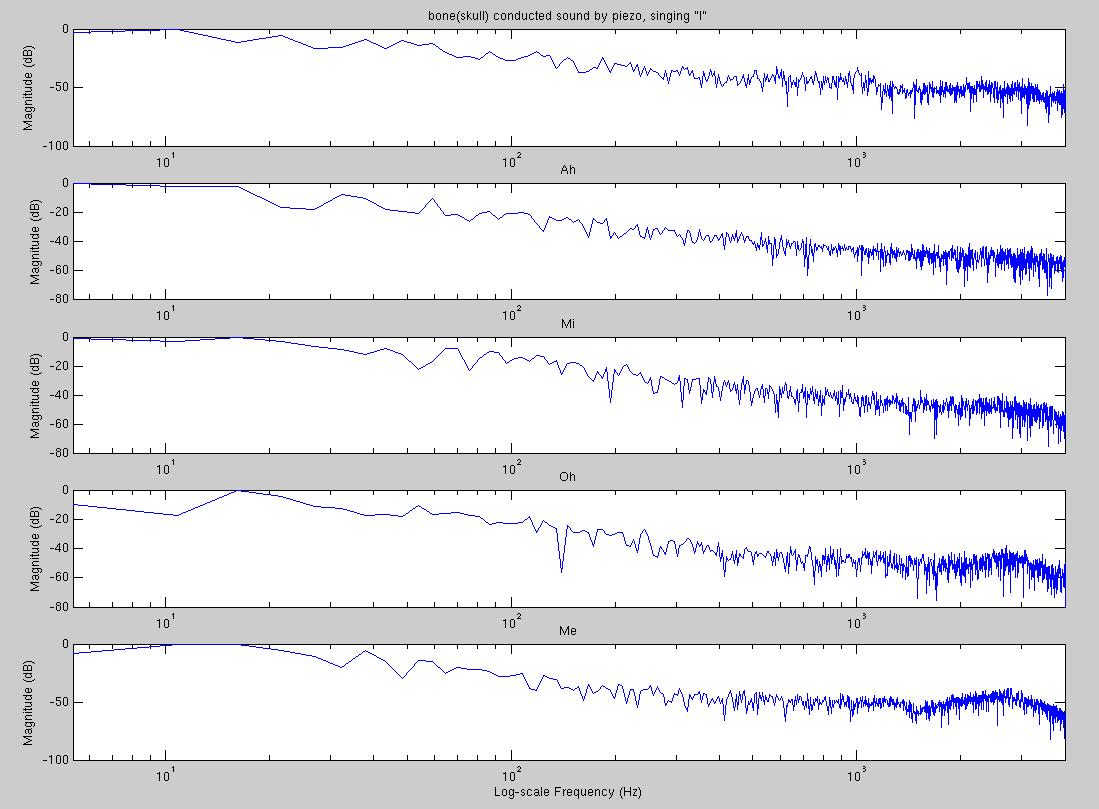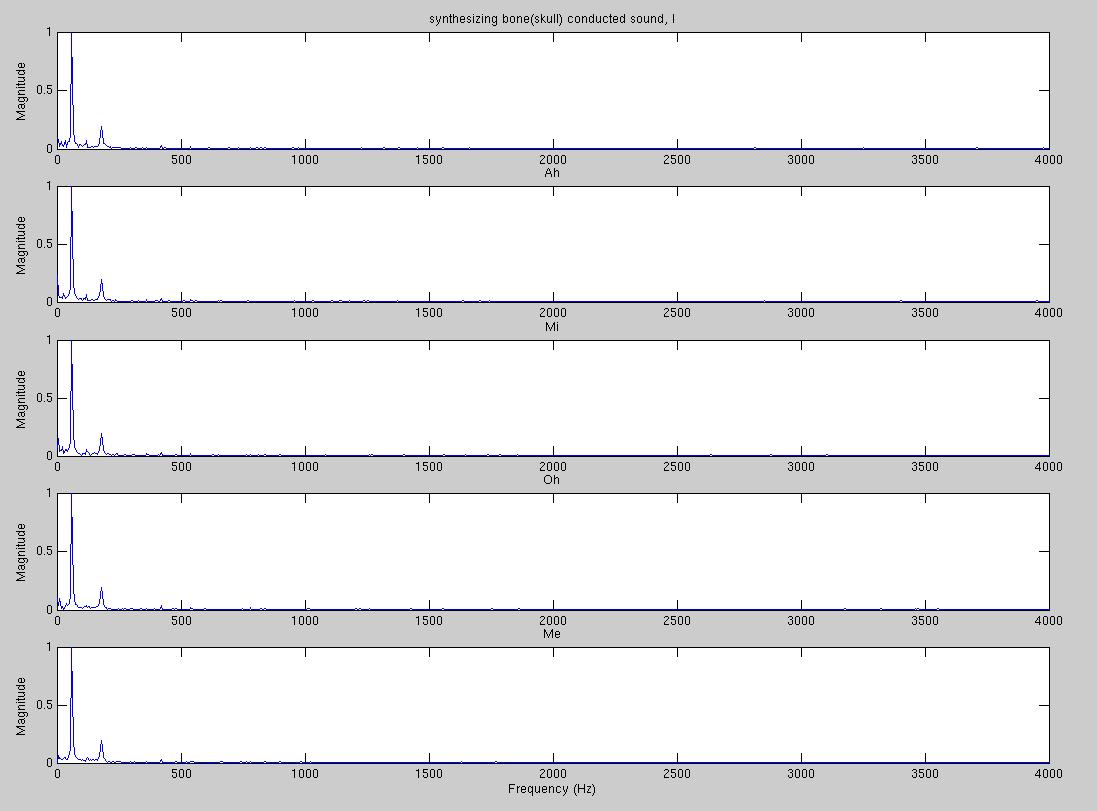
MUSIC 220C - Sook Young Won
Voice Filtering
Have you heard a recording of your voice? Everybody knows that there is a distinguishable gap between sounds I hear and people hear when I speek/singing. This phenomenon is owing that the sound I hear goes through one more way, a skull. Generally, air-transmission sound is easily recorded by a microphone, but bone-transmission sound is not. Therefore, I planned to make a filter which changes air-transmission sound to bone-transmission sound, to add filtered sound to original recording, and then, to simulate the sound I hear finally.
Supporting Hypothesis
Please lunch 'Audacity', open 'Ah.aup' file, and play it~!
Look at two tracks in the file. One is sound recorded by microphone and the other is sound recorded by piezo sensor. When we play hose two sounds at the same time (with gain control), we can hear the sound which is very similar to sound I hear.
Auditory Anatomy
http://www.iurc.montp.inserm.fr/cric/audition/english/ear/fear.htm
http://www.earaces.com/anatomy.htm
Literatures about Bone Conduction (Skull Vibration)
Purcell, D. W., Kunov, H., and Cleghorn, W., (2003). “ Estimating bone conduction trasfer functions using *otoacoutic emissions”
Stenfelt, S., Hakansson, B., and Tjellstrom, A., (1999). “Vibration characteristics of bone conduction sound in vitro”
Hakansson, B., Brandt, A., Carlsson, P., and Tjellstrom, A., (1994). “Resonance Frequency of the human skull in vivo”
errors!
-Even though they got a transfer function of skull resonance, the standard deviation is too large among samples. Furthermore, what I want is frequency resonance by internal excitation(real singing), not by external excitation(noise) which usually used in experiment of above literatures.
1st trial : Experiment using a Piezo
I used a piezo sensor made by MSI. However, this sensor was not easy to settle for recording, and even the recording samples have a lot of noise.

2nd trial : Experiment using a Microphone
I put a condense microphone on my neck and front-head. Unfortunately, this usual microphone is uneffective to pick up skull vibration.
3rd trial : Experiment using a different Piezo
I made a contact microphone using 'Piezo Transducer 273-073A' of RadioShack.(http://home.earthlink.net/~erinys/contactmic.html)
It worked for bone-conducted sound well! So, I recorded two sounds, bone-conducted sound by piezo and air-conducted sound by microphone, simultaneously.
Plot the spectrum~! -> singingHw.m speechHw.m
1) Air-transmission recording (singing) – click to enlarge~
recording samples; I_mic.wav Ah_mic.wav Mi_mic.wav Oh_mic.wav Me_mic.wav

=>
each sample has similar spectrum.
2) Air-transmission recording (speech)
recording samples ; chest_mic.wav speechAh_mic.wav english_mic.wav korean_mic.wav rip_mic.wav
3) Bone-transmission recording (singing)
recording samples ; I_piezo.wav Ah_piezo.wav Mi_piezo.wav Oh_piezo.wav Me_piezo.wav

=>
You can see quite differences between air and bone conducted sound.
Bone-conducted sound has low-pass filter characteristic.
=> In below two recordings, I reduce headvoice litte bit when I was singing. I think it readed less skull-vibration, and then slow slope of spectrum curve.
4) Bone-transmission recording (speech)
recording samples ; chest_piezo.wav speechAh_piezo.wav english_piezo.wav korean_piezo.wav rip_piezo.wav

=>
Definitely, speech use a few headvoice. I has more slow slope then
singing's.
5) Transfer function (singing)
6) Transfer function (speech)
A process to get a proper filter in Matlab
assume that, x = recording sample by a microphone and y = sample by a piezo
to get transfer function for each sample pair(H = Y/X)
to get average transfer function (H_average = (H1 + H2 + ... + Hn)/N)
to find filter coefficients (invfreqz)
to filter air-transmission sound, x signal, with above coefficients(filter)
to get output signal which is supposed to be similar to bone-transmission sound by real-recording.
7) Simulating bone-transmission sound
recording samples; I_synth.wav Ah_synth.wav Mi_synth.wav Oh_synth.wav Me_synth.wav

=>
This synthesized sound is not exactly what I want. I think it places
somewhere between air and bone-conducted sounds.
=> Therefore, the next step should be to get a good filter.
Further Study
noise reduction
other experiment methods
reliable transfer function and filter
implementing applications